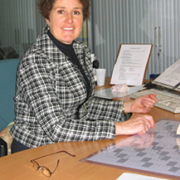Tumour markers: why not VOCs?
Since early diagnosis of cancer is crucial in reducing mortality, much research is directed towards finding minimally invasive methods of detecting early tumour growth. In 1971 the Nobel Prize winner Linus Pauling froze his exhaled breath to analyse the volatile organic compounds (VOCs) it contained by gas chromatography. Forty-six years later, although many studies have suggested that some of the over two hundred VOCs found in human breath and other body specimens such as urine and stool could be diagnostic for different cancers, routine VOC analysis has yet to reach clinical laboratories.
A fairly recent study involving over 300 subjects demonstrated that appropriately trained dogs could identify cases of colon cancer from breath or stool samples with 95% accuracy, and there is a plethora of anecdotal evidence suggesting that canines can identify breast, ovarian, bladder, skin and lung cancers by smelling appropriate samples. Last month an article in the journal of Urology reported that two female dogs had correctly identified prostate cancer in well over 90% of cases by sniffing urine samples from 900 men, 360 of whom had the disease. While packs of Labradors roaming clinic corridors would be neither practical nor affordable, this is surely evidence that signature VOCs for different tumours do exist, and that their detection would be an excellent non-invasive approach for early cancer diagnosis if suitable methods could be developed.
So what are the problems? Firstly much of the research on cancer in recent years has understandably focused on changes in DNA and proteins in tumour cells. In addition relevant VOCs are found in such low concentrations (parts per billion/trillion) that research laboratories with expensive instruments such as GC-MS, proton transfer reaction-MS and selected ion flow tube-MS have so far been necessary to extract and analyse them. A study published in last month’s Gut reported the analysis of VOC patterns in the exhaled breath of 484 subjects, 99 of whom had gastric cancer and 325 of whom had pre-cancerous conditions, by two methods: GC-MS and via a nanoarray sensor. The results were encouraging, indicating that an eight VOC signature had a specificity of 98%; sensitivity was 73%. And a small sorbent trap for breath collection has now been developed that captures more than two hundred VOCs for subsequent GC-MS analysis to find the elucidated signatures specific for various diseases including breast and lung cancer. Clinical trials are underway; the goal is a point-of-care system for early diagnosis. After nearly half a century there may be light at the end of the tunnel!



